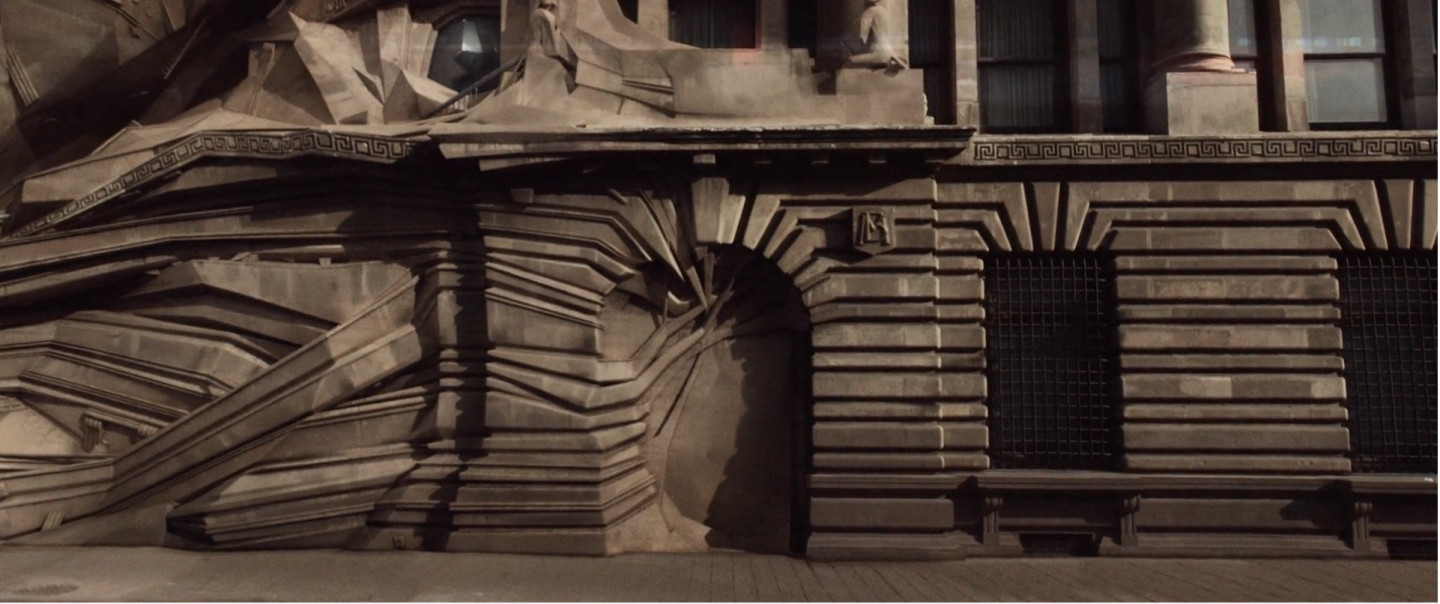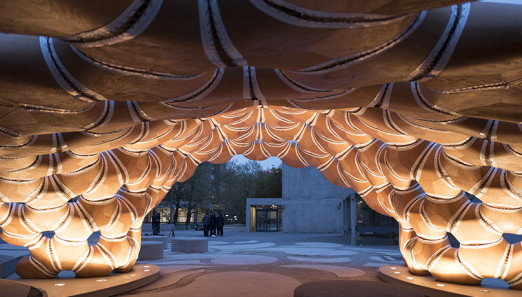Our recent exhibition and talks around Drawn to the Future explored new possibilities generated by connecting and directing the flow of data but a feature by Fiona Shipwright for the new edition of Uncube highlights the phenomenon of Glitch Architecture.
A glitch is an technological error, the coinage is attributed to astronaut John Glenn who called it “a spike or change in voltage from an electrical current.” In 1965 Time magazine defined glitch as a “spaceman’s word for an irritating disturbance.” Over the last 15 years the Glitch Aesthetic emerged as musicians and artists experimented with software error, digital glitches, manufacturing glitch by for example putting music files through image software. Glitch went mainstream in 2009 with Kanye West’s promo for Welcome to Heartbreak.
Fiona Shipwright’s piece is prompted by the release earlier this year of a short film by Dutch film director Mischa Rozema. Released on kickstarer to raise funds for the full movie it secured a deal with Warner Brother. Shipwright explains, “…built structures no longer arise solely from analogue blueprints but increasingly through very digital – and thus glitch susceptible – means such as 3D rendering engines... It is through 3D engines that a Dutch film director Mischa Rozema of PostPanic Pictures has offered a glimpse of how this trajectory might shape, in both theory and practice, the future of the built environment.” In the movie set in Mexico City 50,000 years in the future, buildings repair themselves. However over time the code or software in the self-repair systems have had glitches and the resulting architecture has not reproduced a perfect copy but mutated.
Taking its cue from Mischa Rozema’s film, the title of Fiona Shipwright’s article highlights how glitch is framed in the language of and politics of simulation (“Sim City 50,000”), like other fictional architectures that pose questions of appearance/reality, true/false such as The Matrix or the city building of Inception. Indeed going right back to Plato’s allegory of the cave in his philosophy of the city-state The Republic, moral questions of right and wrong, have been framed as stories of true and fake architecture and landscapes. They're also stories which warn us against the dangers of blending fiction and reality, casting a shadow on architecture's stories wrapped in shape and materials. Our modern tales of glitch as window on hidden systems of control, can mask the transformative possibilities of error and glitch – getting it wrong doesn’t make you a bad person.
Consider the most recent example of actually-existing glitch architecture, the façade for the House of Electronic Arts in Basel created by the glitchily named Zurich Art Collective !Mediengruppe Bitnik. In online culture magazine Hopes and Fears, artist Domagoj Smoljo explains, “we took a photo of the building from the square, 200 meters away. Then we started to manipulate this feature. We wrote a small piece of software that would just move lines inside the image. You get these codec errors, it’s very common. Like when you upload an image and there are some bytes missing.” The architects had to make sense of the façade’s lack pipe drainage from the roof.
Beyond glitch as an aesthetic in architecture, one can begin to imagine the glitch as generating disturbances in the promised smooth running systems of smart cities. The misalignment created by Mediengruppe Bitnik (the misalignment of the photo, the glitched photo, and the building) is a reminder that as in all error, glitch may provide unexpected new opportunities. The idea of the smart city is about aligning information, but the smart city (the un-smart city?) will also emerge from the possibilties created from mislaigning information, strange juxtapositions or connections of wrong data that opens up unexpected, unimagined new thinking about waste, health, transport, work.Like Mediengruppe Bitnik's building, innovation emerges by framing things 'wrongly', or at least by framing problems or technologies differently to conventional framings.
But the last word must go to !Mediengruppe Bitnik artists, Carmen Weisskopf and Domagoj Smoljo who when asked by Hopes and Fears would they work with architecture again, didn’t blink. “DS: We would love to. If you ever build a house, call us. CW: We’ll come glitch it.”
John O'Reilly


